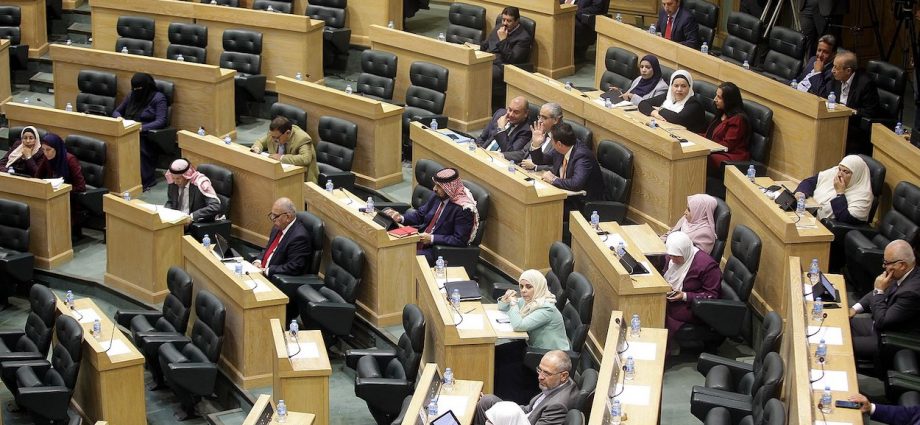
In recent years, a seemingly endless stream of conferences, workshops and studies have been conducted to answer a key question for countries in the Middle East and North Africa (MENA): Why do so few women in the region work?
Currently, just 19% of MENA’s labor force is female, the lowest worldwide. Despite plans and policies to address the gender gap in employment, women remain sidelined at work, which is hurting families and suppressing GDP growth across the region.
While the situation is not uniform in all Arab countries, the reasons that keep women out of the labor force are endemic.
It’s not that women aren’t eager to work outside the home, but legal discrimination, social norms, the burden of childcare, low wages, harassment, gender-related biases in hiring, and a dearth of safe transportation options are among the many barriers hindering employment ambitions.
And while none of this is new – strengthening female labor-force participation has been a global development goal for decades – governments’ efforts to pursue labor-market, education, and structural reforms continue to languish.
Although the region’s women are better educated than ever, educational attainment has not translated into an increase in jobs. In fact, the unemployment rate among young women in Arab countries is 42.5%, nearly double that of young men (21.4%) and almost three times the global average of 14.9%.
In conflict-ridden countries like Yemen and Iraq, female labor-force participation is the lowest in the region – 6% and 11% respectively. But even in Jordan, a country not at war, only 13% of women work outside the home, according to the World Bank.
Jordan’s struggles to close this gap are illustrative. Already burdened with high unemployment – it hit 23% last year – the country has faced a confluence of negative economic trends, not to mention disruptions caused by Covid-19. And despite reforms to school curriculum, the education system continues to stereotype and sideline women, depicting them as inferior to men and limiting their role in society.
Given these failings, it’s not surprising that women are underrepresented in politics. There are just 15 women in the 130-member lower house of parliament – the minimum required under a gender quota system. In the cabinet, there are only two women, while 28 other ministerial positions are occupied by men.
In a patriarchal society, social norms are not easy to change. Challenging gender stereotypes and granting women equal rights often raises the ire of conservatives and Islamists, who see progress as an attack on Islamic values or linked to foreign agendas.
Sadly, these are not fringe ideas. A 2019 United Nations study found that in Jordan, weak legal protections and harmful views on gender conspire to keep women out of the labor force.
These challenges were found at “every possible level directly and indirectly,” the report said, ranging from “what kind of work and what working hours are considered socially acceptable … to gender-assigned roles that limit women’s role to child-rearing and housekeeping.”
Three years later, little has changed. Jordan scored 46.9 out of 100 in the Women, Business, and the Law 2022 report, an index covering 190 countries that assesses the laws and regulations that impact women’s economic opportunities. Jordan’s score is lower than the regional average of 53%.
It’s inexplicable that women in Jordan, who can receive alimony payments, still need a spouse’s consent to work. It is even more frustrating that a male guardianship system intended to protect women imposes restrictions on their mobility, and even allows a male guardian to report women absent, subjecting them to arrest.
As consumer prices continue to rise, it’s becoming increasingly difficult for families to survive on one income. Many women want to work, but social conditioning has taught men that it’s a wife’s duty to do the household chores and to raise the children. A husband who shares responsibilities with his partner is viewed as doing his wife a favor.
To be sure, the region has begun to bridge the gender divide with policies, laws, and well-meaning commitments to change. In Saudi Arabia, which is undergoing radical economic and social reforms, the rate of employment for women has risen dramatically to more than 30%. In other Gulf countries, such as the United Arab Emirates and Kuwait, the figure is nearly 50%.
Despite these gains, much work remains. Possible steps include protecting women from discrimination during pregnancy and while on maternity leave; establishing workplace nurseries; and penalizing employers that discriminate based on gender.
And yet lasting improvements in women’s workforce participation – in Jordan and beyond – will require the implementation of laws that empower women in all aspects of life. Social norms and stereotyping must be challenged – in the media, at school, in the home.
The women of the Middle East and North Africa are not inferior to men; the kitchen is not our kingdom. We have so much more to offer than that.
This article was provided by Syndication Bureau, which holds copyright.

